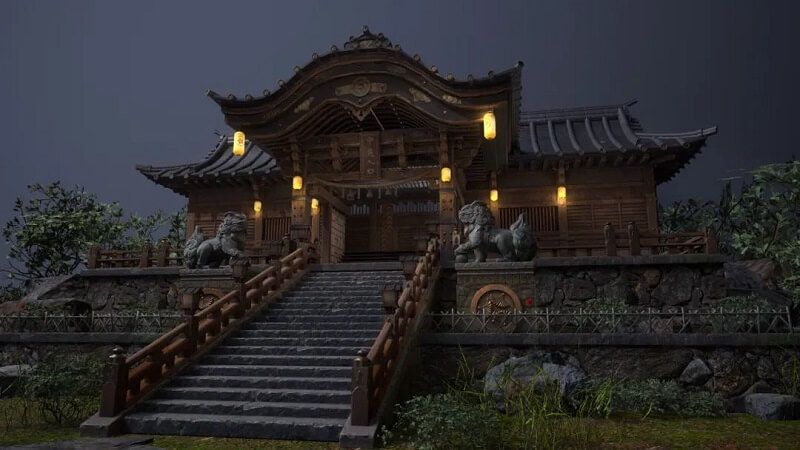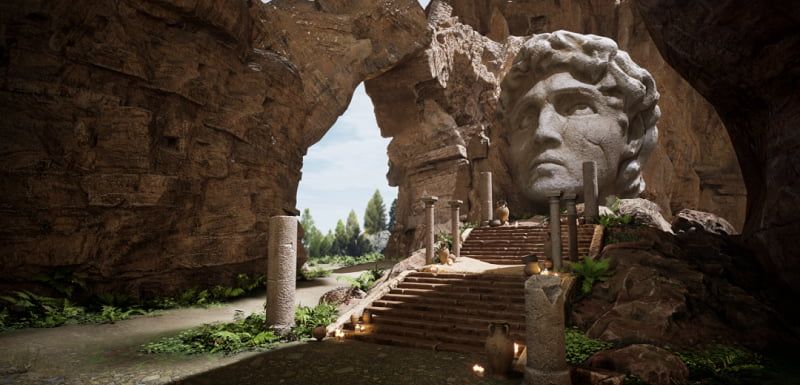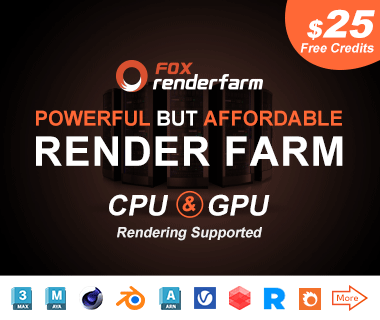Méthodes couramment utilisées pour le dépliage UV dans 3ds Max
Dans cet article, Fox Renderfarm, l’un des principaux fournisseurs de services de rendu cloud et ferme de rendu dans l’industrie de la 3D, vous présente quelques méthodes couramment utilisées pour le dépliage UV dans 3ds Max. Bien que la version installée de 3ds Max soit assez ancienne (2014), cela n’a pas d’impact majeur sur les fonctionnalités de dépliage UV.
Pour modifier les UVW, il suffit d’aller dans : Panneau Modifier > Dépliage UVW > Ouvrir l’Éditeur UV

1. Barre d’outils principale
La barre d’outils contient des commandes permettant de manipuler les sous-objets de texture dans la vue ainsi que des commandes pour définir différentes options.

Miroir et Retournement
De haut en bas, il s'agit de : miroir horizontal, miroir vertical, retournement horizontal, retournement vertical.

Cependant, la différence entre les deux est que le retournement peut entraîner la séparation du modèle le long du bord sélectionné.

Mais le modèle en miroir reste une entité unique.

Option de déballage - maille
Si le modèle doit être importé dans un moteur, par exemple pour créer une animation matérielle de l'interface utilisateur, la grille est un point important à prendre en compte. L'ordre et la proportion de la disposition des UV sont relativement importants.
En cliquant sur Ouvrir, l’interface des options de dépliage s’affichera.

En cochant Afficher la grille, la plage normale est de 0 à 1, ce qui signifie que chaque case de la grille représente 0,1.

La taille de la grille peut être utilisée pour ajuster la fréquence de la grille.

2. Barre d’outils inférieure
Les deux barres d’outils inférieures incluent :
La sélection et la transformation des sous-objets

L’activation de l’affichage de la barre d’attributs

Vous pouvez sélectionner des sommets, des arêtes et des polygones (faces) en utilisant le mode de sélection par élément UV.
Il s’agit de la commande la plus simple, mais aussi la plus courante et pratique.

Développement de la sélection UV
Commencez par sélectionner quelques points

Cliquez pour développer la sélection UV (vous remarquerez un changement du nombre de points sélectionnés)

Réduction de la sélection UV
Commencez par sélectionner quelques points

Cliquez pour réduire la sélection UV (le nombre de points sélectionnés diminue)

Sélection de peinture UV
Une fois que la sélection de la peinture UV est activée, appuyez sur le bouton gauche de la souris et maintenez-le enfoncé. Vous pouvez utiliser la souris pour sélectionner les sommets, les arêtes et les polygones en la faisant glisser. L'étape suivante consiste à agrandir la taille du pinceau, puis à la réduire.

3. Panneau déroulant (boîte de dialogue)
Il contient plusieurs panneaux déroulants proposant divers outils pour l’édition des coordonnées de texture. Rotation autour de l'axe -90 degrés/rotation autour de l'axe 90 degrés. Ces deux commandes peuvent être utilisées pour faire pivoter rapidement les UV lors de l'agencement des UV.

Espacement horizontal/espacement vertical/dresser les éléments sélectionnés
Lors de l'affichage de certains UV d'objets tubulaires, l'espacement horizontal/vertical peut être utilisé avec le redressement des éléments sélectionnés dans le panneau de rouleau de l'élément pour les remodeler.

Sélectionnez d'abord l'UV et cliquez sur l'option "redresser les éléments sélectionnés". Cette commande doit être activée en mode polygone.

Sélectionnez ensuite les bords (en rouge) comme indiqué sur la figure.

Cliquez sur l'espacement vertical, et vous pouvez voir que l'espacement entre eux est correctement affiché.

Quick Peel
En général, lors du traitement des UV dans 3ds Max, la sélection de Quick Peel est le premier choix. Fondamentalement, Quick Peel peut répondre aux besoins de dépliage de la plupart des UV sans qu'il soit nécessaire d'utiliser d'autres commandes pour les ajuster. Si des ajustements sont nécessaires, Relax peut être utilisé, puis Quick Peel peut être cliqué à nouveau.
Comme indiqué, cette partie des UV n'a pas été dépliée.

Tout d'abord, sélectionnez une arête et cliquez sur "Rupture".

Cliquez sur Quick Peel en mode polygone.

Transformer les éléments - Redimensionner les UV
La fonction Redimensionner les UV du panneau Transformer les éléments permet d'ajuster la taille des UV qui ont déjà été divisés, afin qu'ils puissent être affichés. Comme on le voit, la densité de texture des UV n'est pas uniforme.

Sélectionnez-en deux en même temps.

Cliquez sur "Rééchelonner les éléments" pour les disposer automatiquement dans des tailles appropriées et faire correspondre leurs densités.

4. Conclusion
Personnellement, je n’utilise pas souvent 3ds Max pour le dépliage des UVs. En général, j’utilise Maya et RizomUV pour traiter les UVs. Cependant, pour des raisons de praticité ou lorsque les exigences en matière de UV ne sont pas très complexes, il peut arriver qu’un grand nombre de modèles soit concerné. Dans ce cas, l’importation et l’exportation peuvent prendre beaucoup de temps, même avec les nombreux plugins disponibles aujourd’hui. Ainsi, pour certains modèles relativement simples et peu complexes, il est tout à fait possible de les traiter directement dans 3ds Max.
Recommended reading
Top 9 Best And Free Blender Render Farms of 2025
2024-12-30
What is Jibaro? Reveal the Story and Techniques Behind the Production of Jibaro "Love, Death & Robots"
2025-11-03
Top 10 Free And Best Cloud Rendering Services in 2025
2025-03-03
9 Best & Free 3D Rendering Software for Architects & Designers
2025-11-07
Top 8 After Effects Render Farm Recommended of 2025
2025-02-10
Easy Cel Shading Tutorial for Cartoon in Blender Within 2 Minutes
2025-11-26
Shocked! The Secret Behind Using 3D to Make 2D Animation was Revealed!
2025-02-10
How to Render High-quality Images in Blender
2024-12-04
Partners
Previous: Top 4 des moteurs de rendu utilisés pour le rendu multi-GPU
Next: Le rendu endommage-t-il votre ordinateur ?
Interested







